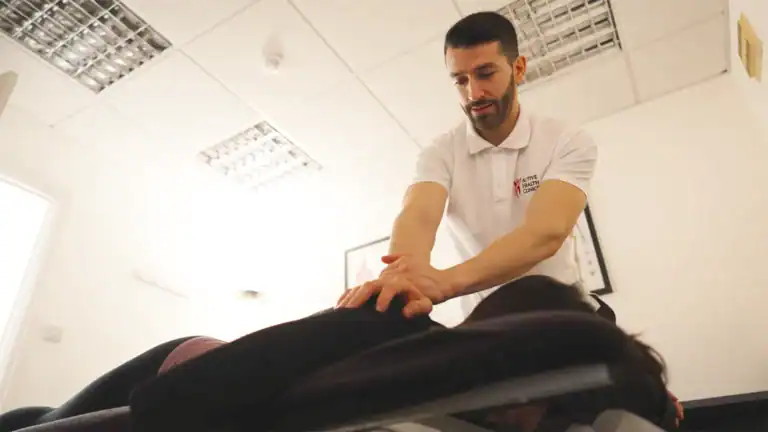At Active Health Clinics, we’re lucky to work with a truly exceptional team of practitioners. Each one brings their own unique approach, background, and skills to the table—helping our patients get better outcomes and keeping our team constantly learning from each other.
This month, we’re shining the spotlight on one of our standout therapists: Flavio, who specialises in a technique that many people have never heard of, but that’s changing lives—Fascial Manipulation.
If you’ve never come across it before, you’re not alone. Fascial Manipulation isn’t a mainstream treatment yet—but among those in the know, it’s highly sought after. In fact, Flavio is one of only three certified Fascial Manipulation therapists in the entire UK, which helps explain why his diary is often jam-packed!
So rather than try to explain it ourselves, we thought: why not let the expert do the talking?
What is Fascial Manipulation?
Fascial Manipulation is a treatment method developed in Italy by Luigi Stecco. It focuses on releasing restrictions in the fascia—the connective tissue that surrounds muscles, nerves, and organs.
These restrictions often result from:
- Repetitive strain
- Sudden trauma
- Surgery or scarring
When fascia becomes restricted, it can no longer move freely. That lack of movement creates mechanical problems in the body, often leading to pain or dysfunction.
Flavio’s approach helps pinpoint and release these restricted areas, allowing your body to return to a more natural, pain-free movement pattern.
Is Chiropractic or Fascial Manipulation Right For You?
There’s no one-size-fits-all answer. In many cases, patients benefit from a combination of Chiropractic and Fascial Manipulation—but it all depends on what your body needs.
Chiropractic care is fantastic for maintenance, posture correction, and general musculoskeletal support. Even if you’re symptom-free, regular adjustments can help you stay that way.
Fascial Manipulation, on the other hand, is more specific. It’s best reserved for active issues—when you’re experiencing pain, restriction, or recurring injuries. Working on the fascia unnecessarily, without symptoms, could actually disrupt your body’s natural compensations and do more harm than good.
Ready to Find Out What Your Body Needs?
The best way to determine the right approach for you is to book an assessment. Whether you’re dealing with a stubborn pain or just want to move and feel better, we’ll help you understand what’s going on—and how to move forward.
Stay Tuned
This is just the beginning! We’ll be sharing more videos with Flavio over the coming weeks, diving deeper into Fascial Manipulation—how it works, who it’s for, and the kinds of issues it can help with. Keep an eye on our social media channels for the next instalment.


